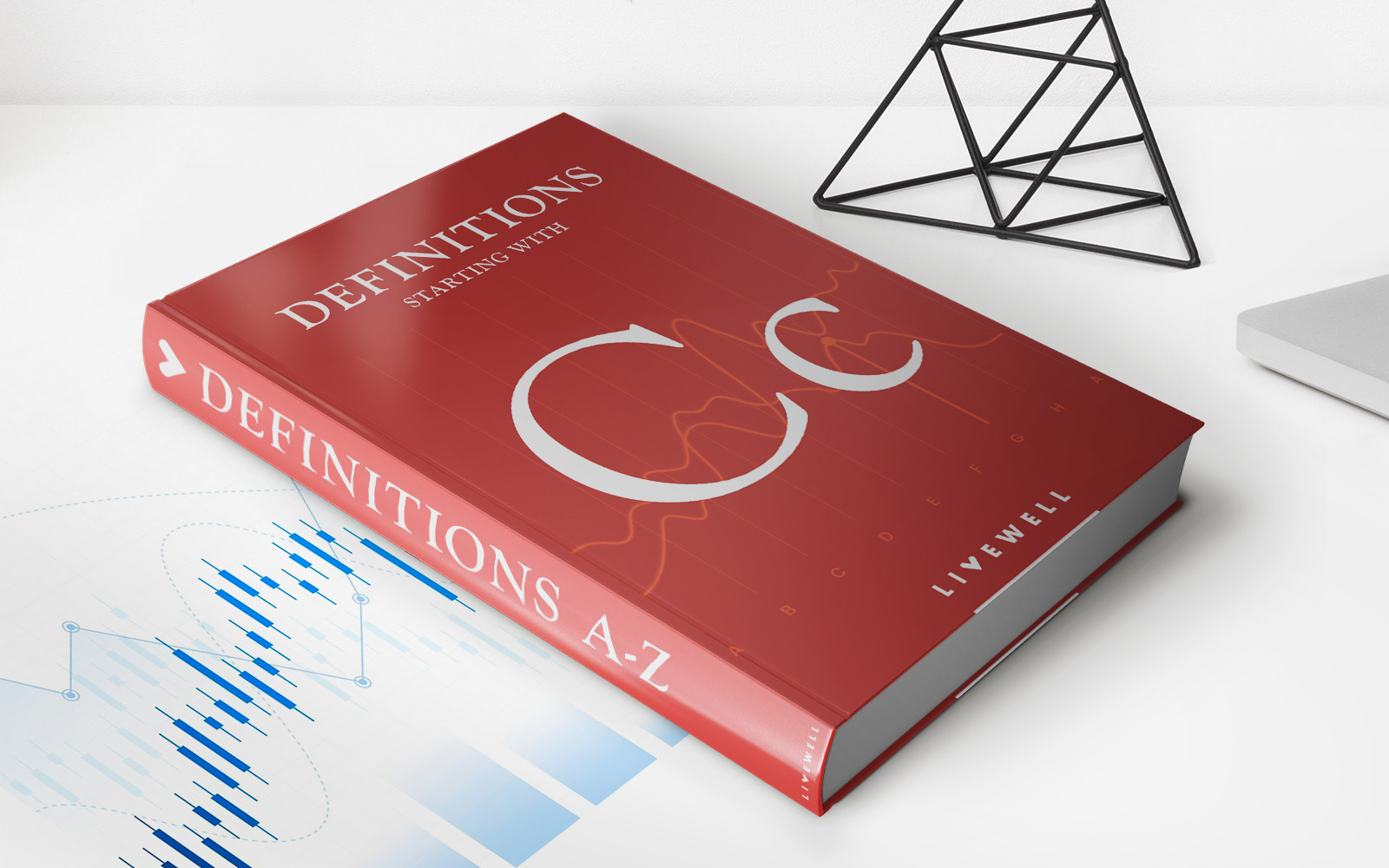Home>Finance>What Happens To Personal Loans When The Lender Dies?


Finance
What Happens To Personal Loans When The Lender Dies?
Published: February 18, 2024
Find out what happens to personal loans when the lender passes away. Understand the financial implications and legal considerations. Get expert advice on managing finance after a lender's death.
(Many of the links in this article redirect to a specific reviewed product. Your purchase of these products through affiliate links helps to generate commission for LiveWell, at no extra cost. Learn more)
Table of Contents
**
Introduction
**
Personal loans are a popular financial tool that many individuals utilize to achieve various goals, such as consolidating debt, covering unexpected expenses, or funding home improvement projects. However, the fate of these loans can become uncertain in the unfortunate event of the lender's passing. This article explores the implications of a lender's death on personal loans and provides insights into the options available to borrowers in such circumstances.
The dynamics of personal loans are often straightforward during the borrower's lifetime, with clear terms and repayment schedules. However, when the lender passes away, both the borrower and the lender's estate may face complexities in managing the outstanding loan balance. Understanding the potential scenarios and available courses of action can provide clarity and guidance for borrowers navigating this challenging situation.
In the following sections, we will delve into the intricacies of personal loans and examine the implications of the lender's demise on the outstanding debt. Furthermore, we will explore the options and considerations for borrowers when facing the aftermath of the lender's death. By shedding light on this often overlooked aspect of personal finance, this article aims to empower borrowers with the knowledge necessary to make informed decisions and navigate potential challenges with confidence.
Understanding Personal Loans
Before delving into the implications of a lender’s death on personal loans, it is essential to grasp the fundamental aspects of these financial instruments. Personal loans are unsecured loans typically offered by banks, credit unions, or online lenders. Unlike secured loans that are backed by collateral, such as a home or car, personal loans are approved based on the borrower’s creditworthiness and ability to repay.
These loans are versatile, as the funds can be used for various purposes, including debt consolidation, home improvement, medical expenses, or major purchases. The loan amount, interest rate, and repayment terms are determined based on the borrower’s credit history, income, and overall financial situation.
Personal loans commonly feature fixed monthly payments over a specified term, typically ranging from two to seven years. The interest rates can be fixed or variable, with fixed rates providing predictable payments throughout the loan term. Borrowers often appreciate the predictability and structure of personal loans, as they allow for effective budgeting and financial planning.
Given that personal loans are unsecured, lenders rely heavily on the borrower’s creditworthiness to mitigate the risk of default. As a result, interest rates on personal loans may be higher than those on secured loans, reflecting the increased risk for the lender. Borrowers with strong credit profiles are more likely to qualify for lower interest rates, potentially reducing the overall cost of borrowing.
Understanding the key characteristics of personal loans, including their unsecured nature, varied usage, and reliance on the borrower’s creditworthiness, sets the stage for comprehending the potential implications of the lender’s death on these financial obligations. With this foundational knowledge in place, borrowers can navigate the complexities that may arise in the event of the lender’s passing and explore viable solutions to address outstanding loan balances.
What Happens to Personal Loans When the Lender Dies?
When a lender passes away, the fate of the outstanding personal loan becomes a pertinent concern for both the borrower and the deceased individual’s estate. The specific implications can vary based on factors such as the loan agreement, applicable laws, and the presence of a co-signer or co-borrower.
In many cases, personal loans are not forgiven upon the lender’s death. The borrower is typically still responsible for repaying the outstanding balance according to the terms outlined in the loan agreement. However, the process of managing the loan after the lender’s passing can differ based on several key considerations.
If the deceased lender had a co-signer or co-borrower on the loan, the responsibility for repayment may shift to the surviving co-signer or co-borrower. In such instances, the surviving party becomes solely accountable for fulfilling the loan obligations, including making regular payments and settling the remaining balance.
Moreover, the lender’s estate may play a significant role in the posthumous management of personal loans. When a person passes away, their estate encompasses all their assets, liabilities, and legal obligations. The outstanding personal loan is considered a liability of the deceased lender’s estate, and it may need to be addressed during the probate process.
During probate, the deceased individual’s assets are inventoried, debts are verified, and the remaining estate is distributed according to the applicable laws and any existing will or estate plan. The executor or personal representative of the estate is responsible for overseeing this process and ensuring that all outstanding debts, including personal loans, are addressed appropriately.
Understanding the implications of a lender’s death on personal loans is crucial for borrowers, as it enables them to navigate the ensuing complexities with clarity and foresight. By comprehending the potential scenarios and legal considerations, borrowers can proactively explore viable options for managing the outstanding loan balance and mitigating any associated challenges.
Options for Handling Personal Loans After the Lender’s Death
When confronted with the aftermath of a lender’s passing, borrowers facing outstanding personal loans have several options for managing the situation effectively. Understanding these options and their implications is essential for navigating this challenging scenario with informed decision-making and financial prudence.
1. Communication with the Lender’s Estate: Upon learning of the lender’s death, borrowers should initiate communication with the executor or personal representative of the deceased individual’s estate. Open and transparent dialogue can provide clarity on the steps to be taken regarding the outstanding personal loan. It is advisable to inquire about the procedures for addressing the loan balance and seek guidance on the available options.
2. Reviewing the Loan Agreement: Thoroughly reviewing the loan agreement is crucial, as it sheds light on the specific terms and conditions governing the loan in the event of the lender’s death. Understanding any provisions related to this circumstance, such as potential acceleration clauses or transferability clauses, can inform the borrower’s next steps and potential courses of action.
3. Exploring Refinancing or Consolidation: In some cases, borrowers may consider refinancing the outstanding loan or consolidating it with other debts. Refinancing involves taking out a new loan to pay off the existing personal loan, potentially leading to more favorable terms or a lower interest rate. Debt consolidation, on the other hand, involves combining multiple debts into a single loan, simplifying repayment and potentially reducing overall interest costs.
4. Seeking Legal Counsel: Given the legal and financial complexities that may arise following a lender’s death, borrowers may benefit from seeking legal counsel to gain a comprehensive understanding of their rights, obligations, and available remedies. A knowledgeable attorney can provide tailored guidance based on the specific circumstances and applicable laws.
5. Negotiating with the Lender’s Estate: Engaging in negotiations with the lender’s estate, particularly if there are challenges related to repayment, can be a viable option. Exploring the potential for modifying the loan terms, negotiating a settlement, or establishing a structured repayment plan may offer a path toward resolving the outstanding balance amicably.
By considering these options and taking proactive steps to address the implications of the lender’s death on the personal loan, borrowers can navigate this sensitive situation with greater confidence and strategic foresight. Each option presents unique considerations and potential outcomes, underscoring the importance of thoughtful deliberation and, when appropriate, seeking professional guidance to chart the most suitable course of action.
Conclusion
Navigating the implications of a lender’s death on personal loans demands a nuanced understanding of the legal, financial, and practical considerations involved. As borrowers grapple with the aftermath of such a significant event, proactive communication, thorough review of the loan agreement, and exploration of viable options are essential for effectively managing the outstanding loan balance.
By recognizing the potential scenarios and available remedies, borrowers can approach the situation with clarity and foresight. Whether through engaging in constructive dialogue with the lender’s estate, seeking legal counsel, or exploring refinancing and negotiation options, borrowers can take proactive steps to address the complexities arising from the lender’s passing.
Furthermore, maintaining open communication and transparency with the executor or personal representative of the deceased lender’s estate can facilitate a collaborative approach to resolving the outstanding loan balance. This approach can lead to mutually beneficial arrangements and alleviate potential uncertainties for both the borrower and the lender’s estate.
Ultimately, the handling of personal loans after the lender’s death underscores the significance of informed decision-making and strategic planning. By leveraging the available options and resources, borrowers can navigate this challenging terrain with resilience and prudence, ensuring that the outstanding loan obligations are addressed in a manner that aligns with legal requirements and the best interests of all parties involved.
Empowered with knowledge and a proactive mindset, borrowers can effectively manage the implications of a lender’s death on personal loans, paving the way for a structured and collaborative approach to resolving outstanding financial obligations during a time of transition and adjustment.














